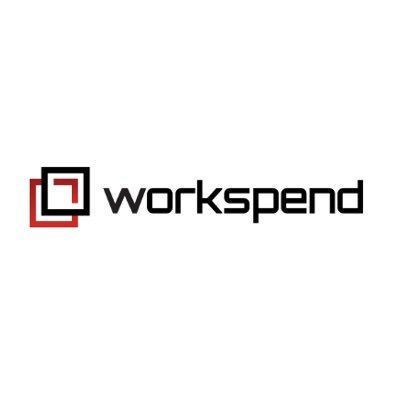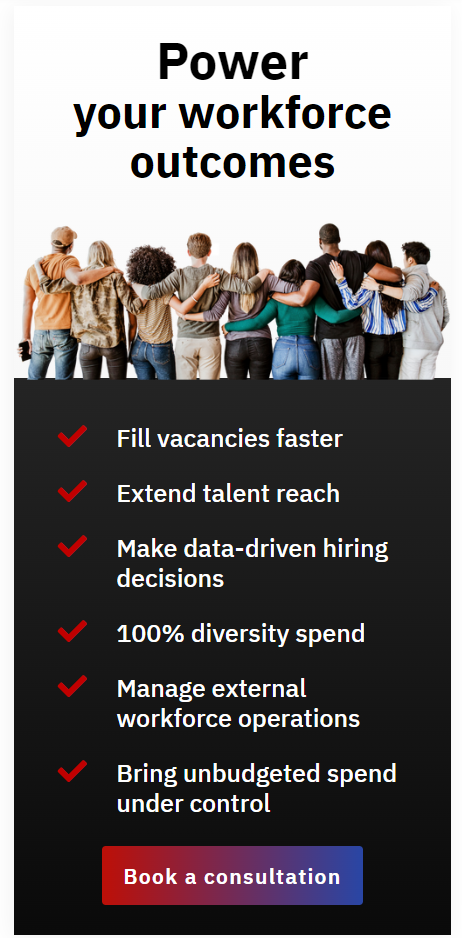Published : January 9th 2025
Can an MSP Deliver Workforce Cost Savings? (Spoiler: Yes!)
Managed Service Providers (MSPs) often get labeled as an added expense, but that overlooks how much they can reduce workforce cost savings. So, can an MSP truly strengthen your bottom line? Absolutely—and the evidence is clear.
As business demands grow more complex, organizations start asking what is an MSP and how it fits into their operations. The truth is, MSPs offer structured, data-driven ways to cut overhead costs without sacrificing quality or flexibility. They tackle everything from consolidation to compliance, ultimately aiming for genuine workforce cost savings that boost your organization’s financial health.
What Is an MSP and Why Does It Matter?
In basic terms, what is an MSP? It’s an external partner managing tasks like temporary staffing, supplier coordination, and workforce compliance under one roof. Rather than juggling multiple vendors or various billing rates, you rely on a single hub for screening talent and ensuring consistent contracts. This clarity paves the way for workforce cost savings.
According to a 2023 SIA survey, 58% of companies with 1000 employees or more are using an MSP to manage their staffing providers.
Because an MSP oversees vendor relationships, it centralizes processes that might otherwise be scattered. Key items—like standardizing agreements or staying compliant with regional rules—no longer slip between teams. With one point of management, leaders gain clear visibility into where money is spent, empowering them to make informed decisions and achieve workforce cost savings.
Breaking Down the Cost-Saving Mechanisms
One reason workforce cost savings can be so significant is the visibility an MSP provides around spend. Instead of disjointed data, you see who’s hired at what rate, in which department, and for how long. That clarity curbs rogue spending and lets you benchmark positions against actual market rates.
Consolidating supplier management is another big advantage. An MSP centralizes all vendor agreements under a single framework, reducing billing confusion and duplicate terms. Many MSPs also harness technology—like vendor management systems—to automate tasks such as timekeeping and compliance checks, freeing your internal teams for more strategic work. This unified approach not only tightens day-to-day operations but also drives consistent workforce cost savings across the board.
Supplier Negotiation and Economy of Scale
Strong MSP savings strategies often begin with supplier negotiations. By aggregating the needs of multiple departments—or even multiple organizations—an MSP gains significant serious leverage in contract talks. Suppliers are more likely to offer competitive terms or lower markups when they see consolidated demand.
Many MSPs also have preferred supplier networks, allowing them to:
- Standardized pricing: Uniform pricing structures across vendors ensure fairness and eliminate discrepancies. Organizations gain greater confidence in their budgeting and forecasting.
- Service quality benchmarks: Vendors are held accountable to strict performance metrics. Poor-performing suppliers are replaced with more reliable alternatives, ensuring consistent service delivery.
This competitive environment results in better rates and service, yielding real workforce cost savings for the organizations involved.
ROI Is More Than Just Expense Reduction
While trimming supplier fees and unifying billing are prime examples of MSP savings strategies, the impact goes further. HR overhead, compliance slip-ups, and onboarding snags are all hidden costs that drain budgets.
Savings that can be reallocated toward priorities like new technologies or employee development. Their are immediate gains:
- Lower operational costs: MSPs streamline repetitive administrative tasks and eliminate inefficiencies, resulting in savings of 25–45% across staffing and related processes.
- Streamline vendor management: MSP will standardize processes, reduce costs, and improve quality by streamlining your vendors.
But also long-term wins such as:
- Improved compliance: MSP’s have experts that specialize in processes to ensure adherence to regulatory requirements and industry standards.
- Increased efficiency: MSP-managed workflows reduce bottlenecks, enabling quicker project turnarounds and up to 45% – 65% increase in operational productivity.
- Improved talent quality: Faster placements and higher retention rates reduce hiring costs while ensuring workforce stability.
These savings allow organizations to achieve a balance of cost reduction and workforce agility.
Real-Life Pain Points an MSP Addresses
The workforce cost savings model directly tackles challenges that reduce efficiency. HR and procurement teams often spend hours reconciling invoices and following up with multiple suppliers. With an MSP, these duties consolidate, freeing staff for higher-value work.
Compliance is another headache: worker classification and regional labor laws can become high-stakes issues if mishandled. MSPs shoulder that load, reducing the threat of legal fallout. These contingent workforce solutions also adapt to shifts in demand, preventing last-minute hiring premiums or paying for unused talent.
Finally, MSPs refine talent quality. They do this by building trusted supplier networks, they ensure skilled candidates land in roles faster, cutting recruitment cycles and turnover expenses. More efficient placements mean more consistent workforce cost savings in the long run.
Can an MSP Ever Be an Added Expense?
Some worry that an MSP’s fees will eat into their workforce cost savings, but a transparent pricing model reveals exactly where your money goes—and why the overall value often outweighs the costs. MSPs share regular reports on cost reductions, supplier performance, and ROI, proving the partnership justifies its price.
Even if there’s an initial outlay, the longer-term benefits—like tighter processes, reduced risks, and better talent management strategy—tend to exceed those upfront expenses. The MSP’s role is to consistently deliver value that surpasses its own fees, ensuring a net positive outcome for your organization.
Where Does Workspend Fit?
At Workspend, we view the MSP model through a comprehensive lens, combining day-to-day logistics with bigger-picture strategies like Statement of Work (SOW), Recruitment Process Outsourcing (RPO) and others. Our approach focuses on delivering measurable results for clients, from operational efficiency to workforce cost savings.
Our approach centralizes vendor management, enhances compliance, and provides real-time visibility into workforce spending. This ensures every dollar is optimized, transforming your workforce into a competitive advantage. With Workspend, your MSP program is tailored to deliver measurable results and align with your unique business goals.
Conclusion
Opting for an MSP can bring major workforce cost savings, from rapid vendor rate reductions to higher returns on investment over time. Once skeptics see the impact of streamlined processes, full visibility, stronger compliance, and tighter vendor management, hesitation often fades.
Contact Workspend today for a discovery assessment—and discover how our approach transforms operational efficiency into measurable results for your talent management strategy.
You may also like:
How to Define and Choose the Right MSP Service Offerings for Your Business
Published : April 4th 2025How to Define and Choose the Right MSP Service Offerings for Your Business Thinking about a Managed Service Provider (MSP)? It’s a single partner that tackles your contingent workforce, manages staffing vendors, and gets the right people into...
AI Should Augment Human Intelligence, Not Replace It
Will smart machines replace human workers? How human intelligence can work with artificial intelligence to produce augmented intelligence.
Common Challenges When Setting Up an MSP and How to Overcome Them
Published : March 4th 2025Common Challenges When Setting Up an MSP and How to Overcome Them Finding the right balance of full-time employees and temporary staff is a key strategic goal for many organizations facing rising demands and growing compliance pressures. As...
Power your workforce
outcomes with a diversity MSP






